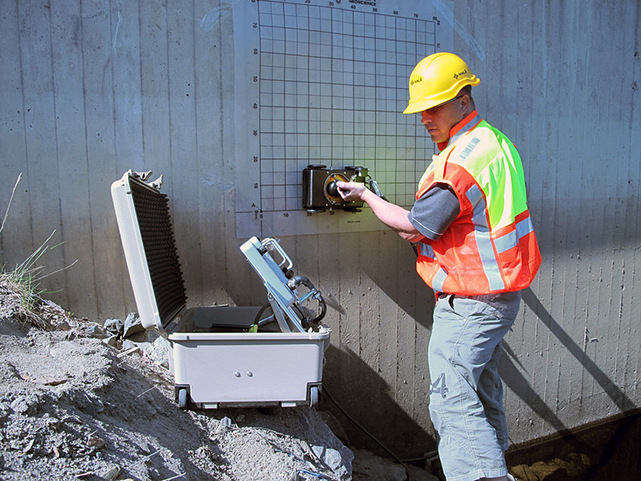Enhancing Project Preparation and Implementation Via Advanced Concrete Scanning Methods
In the world of project planning and insight, implementation and accuracy are important aspects that can make the difference in between success and setbacks. Advanced concrete scanning methods have actually emerged as a sophisticated tool readied to raise the criteria of project administration within the building sector. By using advanced modern technology, these techniques provide a glimpse right into the structural stability of a building even prior to the very first block is laid. The ramifications of such advancements are extensive, promising a standard shift in just how projects are come close to and delivered.
Advantages of Advanced Concrete Scanning Strategies

Improved Precision in Job Analyses
Enhancing project evaluations through innovative concrete scanning techniques dramatically improves the precision and dependability of building and construction assessments. By employing advanced scanning technologies such as ground-penetrating radar (GPR) and 3D imaging, project groups can now get comprehensive insights into the problem of concrete structures, recognizing potential problems or weak points that might not be visible to the nude eye. This boosted degree of precision in job analyses enables building experts to make even more educated choices regarding repair service and upkeep methods, causing enhanced total job results.
Moreover, the enhanced accuracy in project analyses achieved with sophisticated concrete scanning techniques helps in lessening the danger of unanticipated issues during the building phase. By proactively spotting hidden abnormalities within concrete frameworks, such as rebar deterioration or gaps, project teams can resolve these issues early on, avoiding costly hold-ups and rework later on in the task lifecycle. Inevitably, the enhanced precision in job assessments promoted by advanced concrete scanning strategies adds to better efficiency, cost-effectiveness, and quality in building and construction tasks.
Early Identification of Architectural Obstacles
Very early detection of architectural challenges plays a critical role in ensuring the stability and safety of concrete frameworks throughout the building procedure. Identifying potential problems at an early stage permits timely intervention, avoiding expensive rework, routine hold-ups, and security dangers. Advanced concrete scanning strategies, such as ground-penetrating radar (GPR) and 3D imaging, enable job groups to reveal hidden flaws, spaces, reinforcement layout disparities, and other abnormalities that can compromise the framework's security.
By implementing these strategies throughout the preparation and implementation stages, building and construction specialists can proactively resolve architectural challenges before they intensify into major troubles. As an example, spotting inadequate concrete cover over reinforcement bars at an early stage can visit protect against rust and structural weakening in the future - RainierGPR Service Areas. In addition, recognizing variants in concrete density or thickness can help optimize material usage and make certain consistent toughness residential properties throughout the structure
Inevitably, early recognition of structural obstacles via innovative concrete scanning not just improves the general high quality and longevity of the building but likewise adds to a safer built setting for individuals and passengers.
Boosted Safety Steps in Building And Construction
The application of durable security protocols is imperative in the building and construction sector to alleviate threats and safeguard the well-being of employees and stakeholders. Building and construction sites are naturally unsafe settings, with possible risks ranging from drops and tools malfunctions to structural failures. To improve precaution, building and construction business are increasingly adopting technological improvements such as wearable tools that keep an eye on workers' essential indications and find prospective wellness problems in real-time. Additionally, using drones for site monitoring enables regular safety and security evaluations without putting personnel in injury's means. Security training programs have actually also developed to consist of my site online reality simulations that give hands-on experience in managing emergency situation circumstances. Furthermore, the integration of synthetic knowledge in safety monitoring systems makes it possible for aggressive recognition of possible threats, enabling prompt interventions. By prioritizing security with the consolidation of advanced innovations and comprehensive training programs, building and construction projects can substantially decrease crashes and produce a safe workplace for all entailed - RainierGPR Service Areas.
Streamlining Task Management Processes
To optimize functional performance and make certain task success in the building and construction sector, a focus on improving task administration procedures is important. By executing efficient job management processes, building tasks can reduce delays, lower prices, and enhance total performance.

Verdict
In conclusion, the usage of advanced concrete scanning strategies provides numerous advantages for project planning and implementation. These techniques provide improved accuracy in project analyses, very early identification of architectural difficulties, improved safety actions in building and construction, and structured project administration processes. Including these approaches into task operations can eventually bring about much more efficient and effective results in construction tasks.
Inevitably, the enhanced precision in job analyses facilitated by innovative concrete scanning strategies contributes to greater performance, cost-effectiveness, and high quality in building why not look here and construction jobs. RainierGPR Service Areas.
To optimize functional performance and make sure job success in the building and construction industry, an emphasis on streamlining project administration procedures is necessary. By carrying out efficient task monitoring processes, construction tasks can decrease hold-ups, decrease prices, and improve general efficiency. By improving job monitoring processes with modern technology integration, clear interaction, and data-driven methods, building and construction tasks can attain higher performance, cost-effectiveness, and successful end results.
These methods provide better accuracy in project assessments, early identification of architectural challenges, improved safety measures in building, and streamlined project administration procedures.